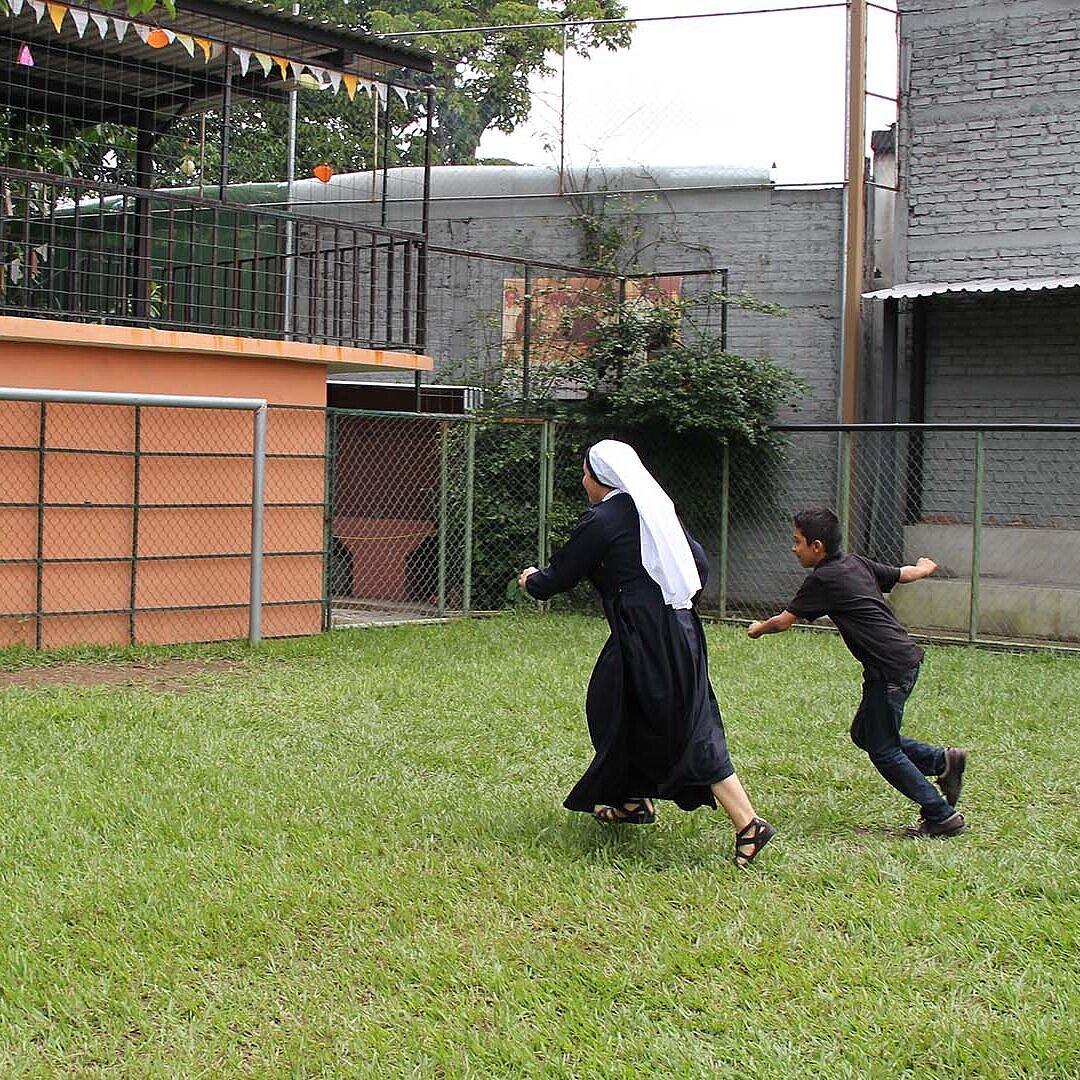Switching to impact orientation does not only change the overall approach to project work, but will also be reflected in all stages of a project, from application to implementation and reporting. Below, we set out our understanding of impact orientation. Impact orientation is particularly relevant to larger social programmes and all projects with educational, training and awareness building elements; it will often be less relevant for relief work or project proposals consisting purely of construction work. Partners submitting project applications are asked to apply the principles of impact orientation in their work and the corresponding applications wherever possible.
I. Introduction to Kindermissionswerk’s understanding of effects
Together with its partners, Kindermissionswerk (KMW) works to improve the life situation of children and young people. This requires an understanding of the effects concept and the terminology applied. In the following, we outline KMW’s understanding of effects and explain the terminology.
At KMW, effects are the changes brought about by the project for the target group: As a result of the activities, the target groups change some behaviours; these changes lead to an improvement in the living conditions of children and young people.
For example, hygiene training can result in children and young people washing their hands on a regular basis. This reduces the incidence of diarrhoeal diseases, improves the general standard of health of children and young people and contributes to a reduction in child mortality in the region.
The example shows that there are different levels of effects which build on each other: Hygiene training (activity) leads to more knowledge about the connection between hygienic behaviour and the incidence of diarrhoeal diseases (output). This knowledge leads to a change in behaviour: regular washing of hands (outcome/direct result). Improved hygiene practices are to a large degree responsible for the reduced incidence of diarrhoeal diseases (impact/indirect result). If the number people affected by diarrhoeal diseases decreases, this contributes to a reduction in child mortality in the region (overarching effect).
Resourcesà Activities à Outputsà Outcomes à Impacts à Overarching effects
Using material and personal resources, activities are implemented that contribute to the achievement of outputs. These can be products, goods or services that are created or delivered by the project. The outputs of the project - its products and services - are therefore not yet effects!
Outcomes (direct effects) describe the direct benefit of the project for the target group. They are in the direct sphere of influence of the project and comprise the change initiated by the project in the behaviour of the target group.
Impacts (indirect effects) are those effects that are to a large extent - but not exclusively - achieved through the implementation of the project.
The overarching effects describe the extent to which the project contributes to a longer-term improvement in the life situation of children and young people.
This separation into different levels of effects reflects the degree of influence exerted by the project on the changes.
All improvements in the life situation of children and young people achieved through the project must be specific and measurable. At the outcome level, the use of indicators is therefore especially important in order to measure the progress or effectiveness of the project. The indicators must provide information about whether and to what extent changes have taken place based on corresponding observations and measurements.
The presentation of the project’s understanding of effects as well as the planning of outputs, activities, resources and indicators are therefore an essential part of the funding application.
II. Logical Framework
Overarching effects | Definition: This describes the extent to which the project contributes to a longer-term improvement in the life situation of children and young people. Example: The project makes a contribution to reducing child mortality in the region | |||
|---|---|---|---|---|
Impacts (indirect effects) | Outcomes (direct effects) | Outputs | Activities | Resources |
Guide: Example: | Guide: Example: | Guide: Example: | Guide: Example: | Guide: Example: |
III. Indicators
Indicators help us measure the progress made or effects generated by the project. They must provide information about whether and to what extent changes have taken place based on corresponding observations and measurements. Depending on the project-logic level to which they refer, indicators can be used to measure and assess the progress of the project (activities and outputs) or the effects (use of outputs, outcomes, impacts and overarching effects).
KMW expects indicators to be formulated at the outcomes (direct effects) level.
The SMART criteria have proven helpful in the development and assessment of indicators. The indicators applied in the applications should satisfy these criteria:
S Specific concrete, clear, precise and unambiguous
M Measurable measurable with reasonable outlay (in terms of work and time)
A Attainable realistically achievable
R Relevant provides reliable information on the intended change
T Timebound specifies a clear timeframe
A good indicator should answer the following questions:
- Target group: Who/what? For whom?
- Quantity: How much?
- Location/region: Where?
- Quality: How? How good?
- Deadline: By when?
EXAMPLE
Indicator: Six months after the hygiene training, 50% of the children wash themselves regularly and wash their hands as taught.
Specific: The formulation “as taught” introduces the aspects of quality and regularity/quantity.
Measurable: The number of students who regularly wash their hands is simple to observe. The indicator is therefore easily measurable.
Attainable: A score of 50% may be realistic; a score of 80% or 100% is not.
Relevant: The influence of improved hygiene on the incidence of infectious diseases is well documented.
Timebound: The formulation “Six months after...” sets the timeframe.

